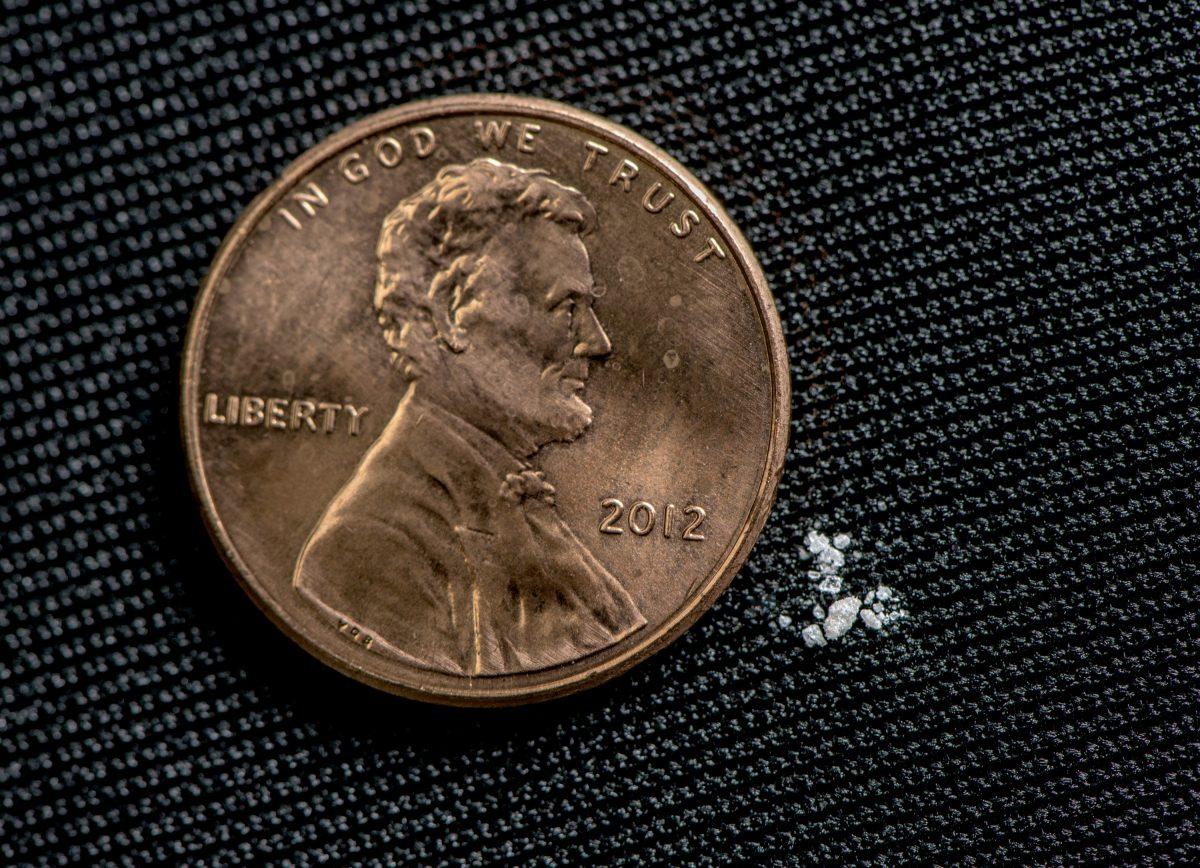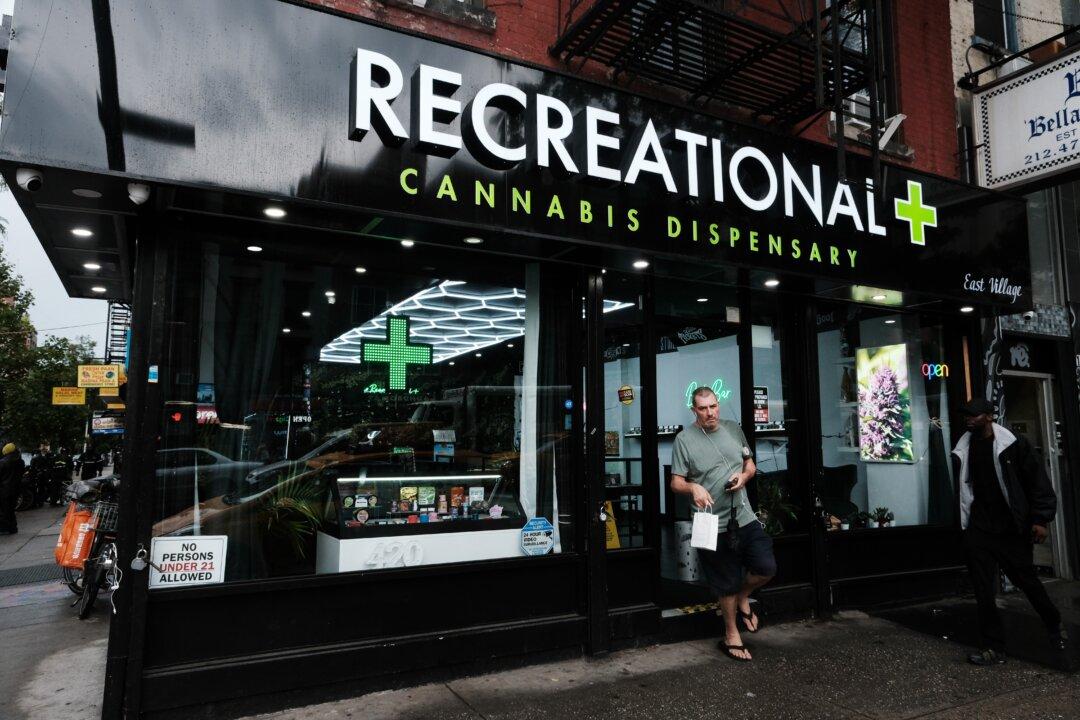One Central Texas school district has waged war against fentanyl, a deadly illicit drug that is infiltrating nearly every town across the country.
After two Hays Consolidated Independent School District (HCISD) students died within weeks of each other from fentanyl poisoning, district leaders knew they had to do everything possible to save the children.
“We had the first two that were a week apart over the summer, and we decided to put some type of campaign together,” said Tim Savoy, chief communications officer for HCISD.
Then, another student died from fentanyl poisoning a few days after the 2022-2023 school year started.
“Once we had our third [student death] right at the first of the school year, we said, at this point, it’s a crisis,” Savoy told The Epoch Times. “We just pushed everything aside and said this is priority No. 1. We have to address this.”
The district later learned that another student who died during the summer break had also succumbed to fentanyl poisoning, bringing the total number of student deaths to four in 2022.
Over the Christmas break, a fifth HCISD student died. The student, a 14-year-old girl, was found unconscious in her home on Jan. 3. While the autopsy report is pending, fentanyl is suspected as the cause of death.
About Fentanyl
Fentanyl is 20 times stronger than heroin and 100 times stronger than morphine. A dose of as little as 2 milligrams can be fatal.Six out of 10 fake prescription pills are laced with fatal doses of fentanyl, according to the U.S. Drug Enforcement Administration (DEA). The pills look like prescription opioids such as OxyContin, Percocet, Vicodin, Xanax, or stimulants such as Adderall. Illicit drugs are readily available on social media.

Attacking the Crisis
One of the first questions the district administrators asked themselves was, “What can we do?”“We can educate,” Savoy said, which has been the district’s approach in attacking the fentanyl crisis. The district started the conversation and developed its campaign along the way.
“Our philosophy is this: Not talking about it doesn’t fix the problem,” Savoy said.
The district is taking a three-part approach to attacking the fentanyl crisis. It includes law enforcement, awareness and education, and helping those with addiction.
Over the last decade or so, the district has spent tens of millions of dollars on active shooter training and hardening schools against intruders. It also spent millions on face masks, face shields, and sanitizing buildings during the COVID-19 pandemic.
“Thank God, we haven’t lost anyone,” to a school shooting or COVID-19, Savoy said.
“We’re actually losing our students to the fentanyl crisis, so we have to give that equal attention, and we have to address it with the same energy that we have other potential threats because this is real,” he continued. “We are losing students to this.”
Administrators began printing posters to start the conversation, and the campaign evolved from there.
They found a lot of educational information for older students and their parents, but they knew they also had to send the message to the district’s youngest students.
Since they didn’t have examples to follow, they created their own messaging to help educate elementary students who could unintentionally come across a pill on the ground or in an older sibling’s backpack or bedroom.
“We made an elementary poster,” Savoy said. “I didn’t have anything to model it after.”
They got confirmation that the messaging resonated when a second grader refused to take a “pill” that another child offered her on the school bus.
Real Stories of Fentanyl Poisoning
On the district website, parents, teachers, students, and community members can find a library of educational materials, including posters, resources, and more.The district has also created videos featuring parents of some of the district’s children who died after taking a fentanyl-laced pill.

During the video, an SUV pulls into a parking lot outside one of the school buildings. Two teens are inside, and the driver falls unconscious. The other teen gets out and pulls the unconscious driver out of the vehicle and onto the ground. After a few minutes, the teen calls 911 and is instructed to give CPR to his friend until first responders arrive.
Emergency services arrived and transported the teen to a hospital, where he was treated and released.
The parents of the teen driver allowed HCISD to post the video online. It has also been shown to all HCISD high school students during drug awareness programs.
Law Enforcement
HCISD has partnered closely with local and county law enforcement.Hays County Sheriff Deputy Anthony Hipolito said the fentanyl problem is not confined to HCISD, although the district has seen more student deaths than other districts in the county.
“Let’s figure out the why,” he said, adding that young people face greater stressors than many adults faced 25 years ago.
Finding ways to help a child who is considering using drugs, as well as those already addicted, is important in saving the lives of young people.
Campus Preparedness
This school year, the district doubled the amount of Narcan available on all 26 campuses. Narcan, the brand name of the generic naloxone, is a drug used to reverse opioid overdose.The amount of fentanyl varies in illicit drugs. The higher the amount of fentanyl, the more Narcan is required to reverse the effect of fentanyl, so having extra doses is essential in saving lives.
“Narcan is developed for natural opiates,” Savoy explained. “Sometimes the potency of the synthetic means using multiple doses. We had a situation where we had to do six doses to bring [the student] out of being passed out.”
But there are also some myths to dispel about Narcan.
“The myth that you can just do Narcan and carry on about your business is incorrect. Narcan just buys you time to get to the emergency room,” Savoy said.
“If kids think, ‘Hey, we can have a designated Narcan person, and if we take these pills and they happen to be fentanyl … then they’ll be there to Narcan us, and we’ll be fine,’ that’s not the case.”
A Family’s Story
Janel Rodriguez and Brandon Dunn know the pain of losing a child to fentanyl. Their 15-year-old son Noah Rodriguez died just days after starting his sophomore year at Johnson High School.“He was just a sweet kid,” Rodriguez said. “He loved to do pranks, and he was a great athlete.”
Noah was the oldest of the couple’s four children. Just two weeks before his death, Rodriguez and Dunn had welcomed the birth of their second son.
At about midnight on Aug. 21, 2022, they received a phone call that Noah had “overdosed” while at a friend’s house. He died an hour later.
It wasn’t the first time Noah’s parents had received such a call.
Last May, Noah and some of his friends tried cocaine. Noah ended up in the intensive care unit on life support for four days.
“For some reason, it affected Noah the way it did,” Rodriquez explained. “All the other friends were fine, but they all were taken to the hospital for at least a day.”
When he woke up, he told his mom what he had done.
“He just started crying and said, ‘I’m so sorry, mom,’” Rodriguez continued.
A few days later, Noah was released from the hospital.
“I will never do that again,” Rodriguez said Noah promised. “I don’t want to die.”
She said has no idea why Noah decided to take the “M30” pill that August night. Counterfeit oxycodone pills are often imprinted with an “M” on one side and the number “30” on the other. They look nearly identical to the real thing and can be difficult to spot, according to the DEA.
Shortly after Noah’s death, Rodriguez and her husband launched the Forever15Project to help educate parents and young people about the realities of fentanyl.
“One pill changed our lives forever,” Rodriguez wrote on the Forever15Project website.
A billboard along Interstate Highway 35 in Kyle, Texas, reminds passersby of the deadly consequences affecting the community.
It reads “Fentanyl Steals Your Friends” and has pictures of three teen boys, including Noah Rodriguez, all of whom died from fentanyl poisoning.





